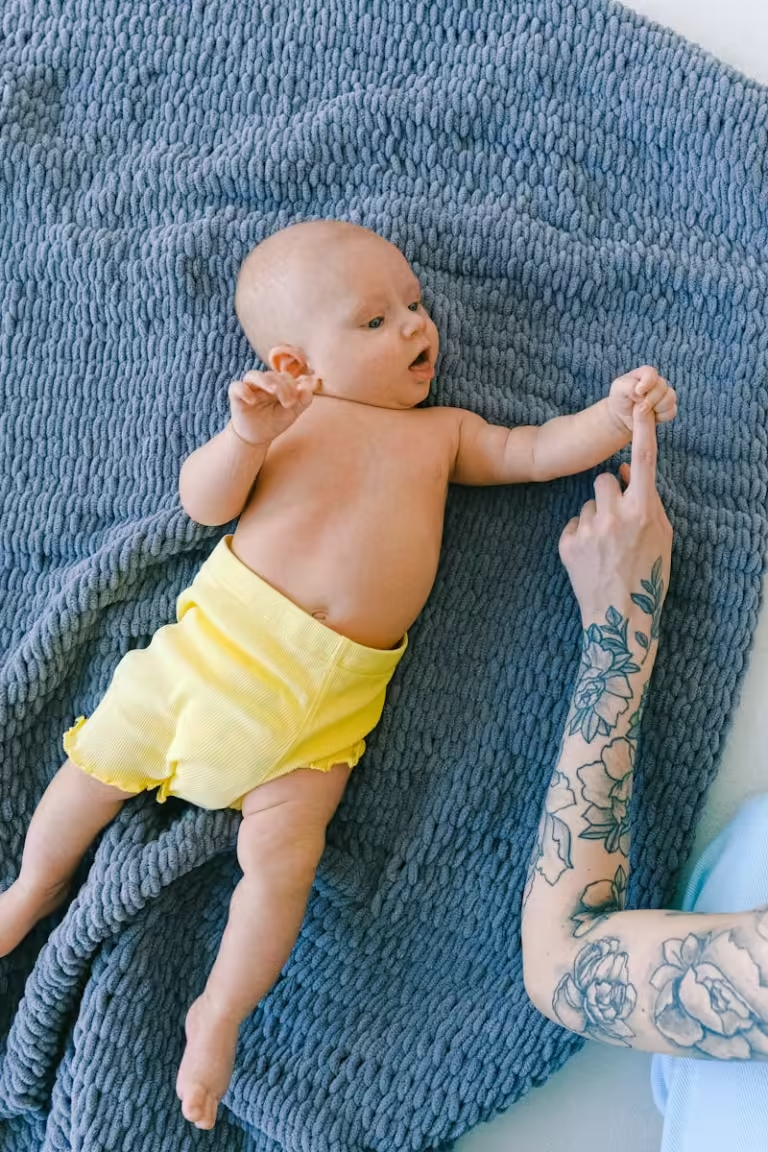Bathing your newborn baby is an essential part of keeping them clean and healthy, but it can also be a daunting task for new parents. This step-by-step guide will help you navigate bath time with confidence, along with answers to frequently asked questions:

What you will need:
A clean, soft surface, such as a changing mat or towel
A basin of warm water (around 37°C)
A mild, baby-safe shampoo
A soft washcloth
A clean towel
A jug or cup for pouring water
Cotton wool balls (optional)
Steps:
Gather your supplies and warm the room. Make sure you have everything you need within reach before you start. The room should be warm and draft-free to prevent your baby from getting cold.
Undress your baby. Gently undress your baby and remove their nappy.
Position your baby. Sit on the floor or on a bed with your baby cradled in your arm. You can also use a baby bath seat if you prefer.
Wet your baby’s head. Use a jug or cup to pour warm water over your baby’s head, avoiding their eyes. You can use cotton wool balls to wipe their face and eyes gently.
Apply shampoo. Apply a small amount of baby shampoo to your hand and lather it up. Gently massage it into your baby’s hair, avoiding their eyes.
Rinse your baby’s head. Use the jug or cup to rinse off the shampoo thoroughly. Make sure all the soap is gone.
Soap your baby’s body. Use the washcloth to soap your baby’s body, one section at a time. Start with the face and neck, then move on to the arms, legs, and chest. Avoid getting soap in their eyes, ears, and mouth.
Rinse your baby’s body. Rinse off all the soap with warm water, using the jug or cup.
Dry your baby. Wrap your baby in a clean towel and pat them dry gently. Be sure to dry all the creases, especially behind the ears and in the neck folds.
Put on a new nappy and dress your baby.
Tips:
It is not necessary to bathe your newborn baby every day. Two or three times a week is usually enough.
If your baby has an umbilical cord stump, you can sponge bathe them until it falls off.
Keep an eye on your baby at all times during bath time. Never leave them unattended, even for a second.
Make bath time a fun and relaxing experience for both you and your baby. Sing songs, talk to them, and make eye contact.
Frequently Asked Questions:
How often should I bathe my newborn?
You don’t need to bathe your baby every day. 2-3 times a week is sufficient unless they get particularly dirty.
Do I need to use shampoo every time?
No, shampoo is only needed 1-2 times a week for most babies.
What temperature should the bath water be?
Aim for lukewarm water, around 37°C, feeling warm but not hot to the touch.
How can I prevent soap getting in my baby’s eyes?
Use a washcloth to soap your baby’s face and avoid directly pouring water over their head. You can also cup your hand over their forehead when rinsing.
Can I use baby wipes instead of a bath?
While wipes are handy for quick cleanups, they shouldn’t replace regular baths. Baths help remove dirt and bacteria from all areas of your baby’s body.
My baby seems scared of bath time. What can I do?
Make bath time a positive experience with gentle handling, warm water, calming music, and soothing talk. Allow them to play with safe bath toys.
My baby has cradle cap. How should I bathe them?
Use a gentle baby shampoo and massage it gently into their scalp. You can use a soft brush to loosen the flakes before rinsing thoroughly. Consult your doctor for specific advice if needed.
Remember, this is just a general guide. Always follow the advice of your midwife or health visitor when caring for your newborn baby.
I hope this comprehensive guide helps you feel more confident and prepared for bath time with your little one!








